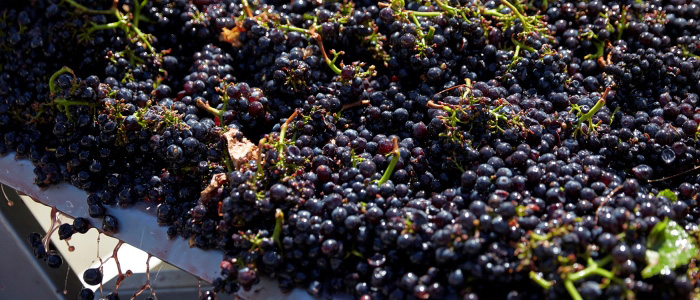Disease control vital for optimum grape production
About
-
Category
- Grower Stories
- Product News
- Growers Edge
-
Date
14 November, 2017
-
Location
Australia
About
Category
- Grower Stories
- Product News
- Growers Edge
Date
14 November, 2017
Location
Australia
Getting disease control right in vineyards is vital not only to maximise input efficiency and effectiveness, but also to optimise production and fruit quality. Viticulturists have plenty of things to consider when it comes to disease control, from chemical selection and rotation to spray interval management and application techniques.

Getting disease control right in vineyards is vital not only to maximise input efficiency and effectiveness, but also to optimise production and fruit quality.
Bayer Business Development Manager for Horticulture, Hugh Armstrong, says viticulturists have plenty of things to consider when it comes to disease control, from chemical selection and rotation to spray interval management and application techniques.
Hugh says as grape regions across Australia move through the season, it is critical growers have a plan in place to combat ever-present disease threats.
“We’ve got to plan ahead. Growers need to get in early and talk to their resellers about disease control options, their own requirements and to help formulate a really robust management plan,’’ Hugh says.
“There are plenty of options, but growers particularly need to have a good plan in place for the first three months after budburst. Most of the hard work for fungal disease control should be done in the period through to December – it’s often too late if you start seeing problems after Christmas.’’
He says Bayer is working closely with growers and its ongoing product development work means that new options may become available in coming seasons.
“Bayer has a strong reputation for developing new options for growers, particularly against the key fungal diseases in grapes, which are powdery mildew and botrytis.’’
“We have chemistry in three of the main mode of action groups against powdery mildew, which occurs pretty much every year in every region. 2016 again showed that early prevention was key for powdery mildew.”

“Growers should apply a range of different chemical groups throughout the season and utilise the right chemistry at the right time.’’
Hugh says appropriate spray intervals and good spray coverage is also critical for any effective powdery mildew control program.
“If you’re doing those three things, then you should be able to get on top of powdery mildew, but it’s a perennial threat,” he says.
Growers’ annual powdery mildew control program should include early season applications of the powerful fungicide, Prosper®.
“Prosper is in a chemistry group on its own – Group 5 – and it’s really robust at the early timing because the grapes are growing rapidly and so is powdery mildew, so you need a really strong product to use,’’ Hugh says.
As vines develop towards the pre-flowering stage, there are a number of powdery mildew control options, including Flint®.
“Flint is a very strong Group 11 fungicide, but it has a protectant action, so growers must ensure there’s no powdery mildew already in the vineyard at the time of spraying,” Hugh says.
Towards flowering, growers then need to be thinking about botrytis, especially in the cooler, wetter regions of the country.
Bayer has products from two botrytis fungicide groups for growers at flowering; Scala® (Group 9) and Teldor® (Group 17).
“They’re in different chemical groups and work in different ways, so I’d advise rotation between these groups from year-to-year,’’ Hugh says.
“These products are the key for botrytis control early in the season, but in export wine grapes there are a lot of restrictions on when you can use products. Many can’t be used after flowering, so you’ve got to protect your crop early.’’




